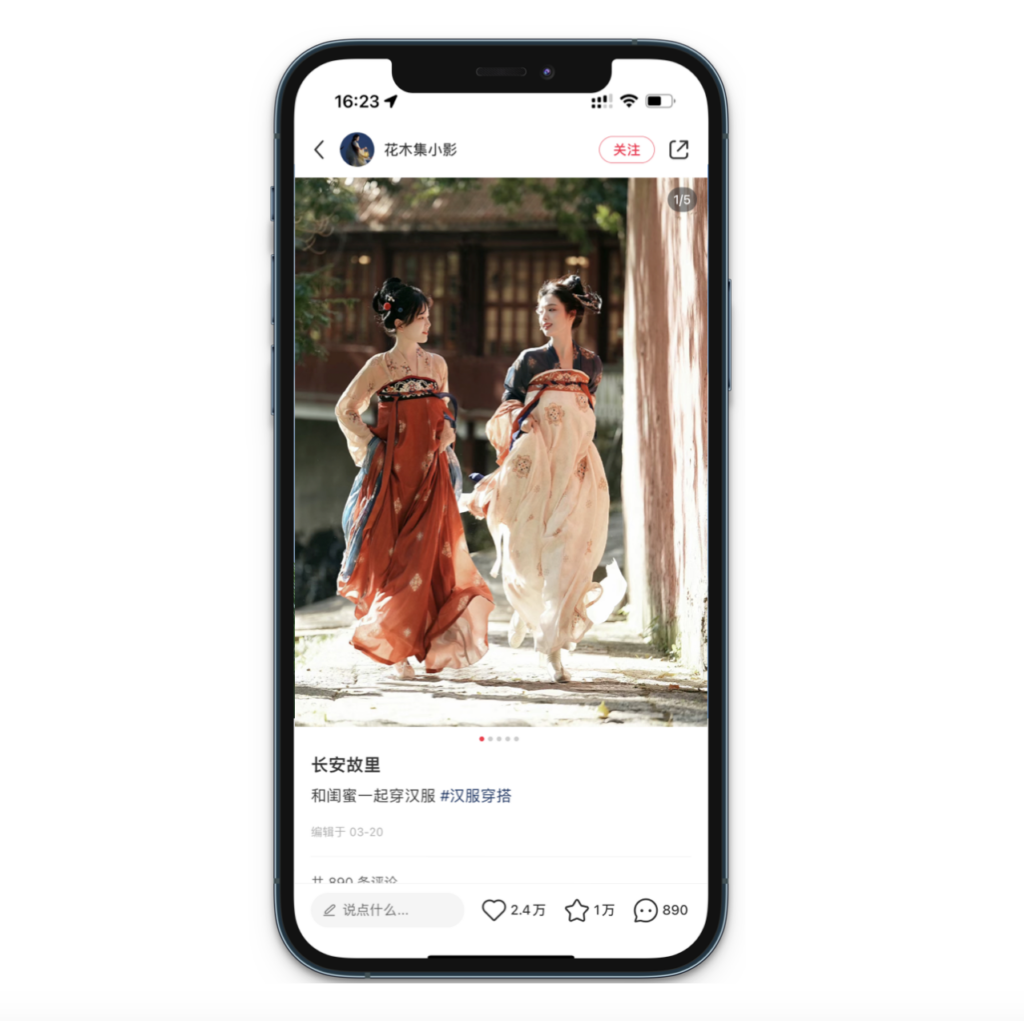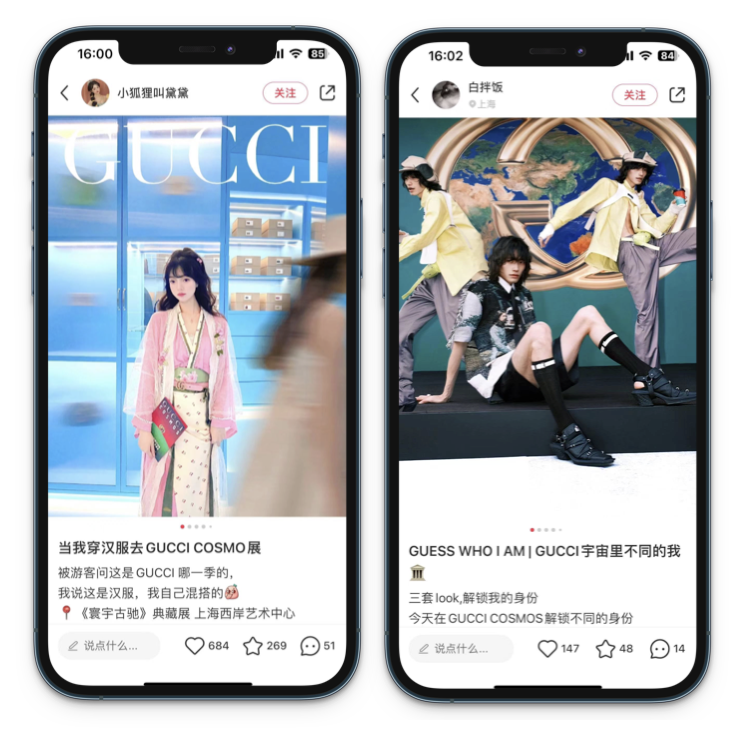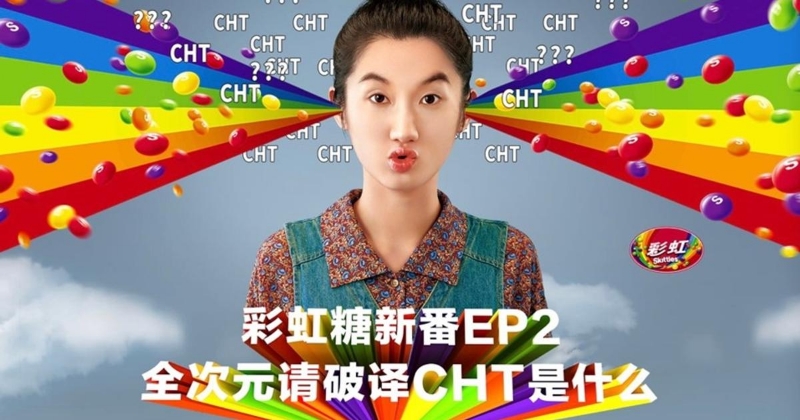Keep in mind, Gen Z are particular about their preferences and trends move fast! Make sure to stay up-to-date and always work with a knowledgeable, local team to develop relevant campaigns and communications. In this article we’ll cover several marketing strategies unique to Gen Z and examples of brands which have executed campaigns under each theme.
GUOCHAO
Guochao (China Chic) = Chinese goods + trend of the times.
In a narrow sense, if something is “Guochao” it refers to trendy brands created by local Chinese designers, or trendy products designed by local Chinese designers that contain Chinese cultural elements. As the trend has evolved, the term now generally refers to the popularity of domestic product groups and products with Chinese characteristics (including foreign brands’ limited series related to China).
Products that reflect personal style and values
Chinese consumers are seeking products that reflect their personal style and values – there is an increasing interest in unique, locally designed luxury products that convey individuality and self-expression. Therefore, brands are expected to explore Chinese motifs, craftsmanship, ingredients and historical influences to create products that resonate with the local market.
Products that reflect personal style and values
Overall, this trend reflects Chinese consumers’ desire to celebrate and express their cultural identities through their choices. Many local brands, from mass retail to higher-end and luxury have integrated this trend into their marketing and has proven to effectively capture the attention and affection of consumers.
It is important to note that Guochao isn’t just popular because a rise in nationalism as many would state. The popularity is much more nuanced and includes many factors including price, quality of products (domestic brands are increasing R&D and now able to produce much higher quality than before), marketing capabilities of domestic brands, etc.

Hanfu (汉服) has become a favorite fashion among young people. The related clothing industry is booming, which has led to a series of activities such as Hanfu catwalk shows and Hanfu filming. The price of hand-sewn Hanfu can range from twenty dollars to hundreds of dollars.
SEPHORA: REACH + CONNECT
Sephora launched their new cosmetics products at the end of May 2023 with a campaign cleverly combining Western and Eastern cultures. The beauty retailer invited influencers on Douyin to launch a challenge to create a new makeup look.

This campaign embraced not only the Guochao trend through the style of makeup as well as the fashion styling of the shoot but also engaged Gen Z effectively with the mechanism of the campaign through using short videos as this is a popular and well-used medium among Gen Z.
COSMIC COSPLAY
Express & experiment with identity
Gen Z in China is more connected to global pop culture through the internet and social media. They are exposed to a wide range of media from different countries, which includes popular characters from anime, manga, and movies that inspire cosplay.
Cosplay provides a great opportunity for Gen Z to express themselves creatively and experiment with their identities. They invest their resources in cosplay costumes, accessories, and related merchandise. Online platforms, such as Bilibili, Weibo, WeChat, and Douyin, have facilitated the growth of cosplay communities. Gen Z share their costumes, makeup techniques, and experiences with like-minded individuals, fostering a sense of belonging.
OPPO: REACH + CONNECT
When OPPO released their new phone model Reno10 Pro in 2023, they launched a campaign called “Show your Reno10 pink” on Xiaohongshu. The campaign features a collaboration with top influencers to generate videos with the famous pink fox in Disneyland and Karina, a popular cosplay actress from Ukraine who works in China.

GUCCI: REACH + CONNECT
Gucci also targeted Gen Z consumers through an offline exhibition show in Shanghai in 2023 called ‘Gucci Cosmo’, appealing to Gen Z through art, history and cosplay.

VIDEO
Gen Z came of age during the same time many of China’s most popular video platforms emerged and thus have grown up fully immersed in this medium. The video generation trend aligns well with the preferences, behaviors, and technological fluency of Chinese Gen Z. Video content allows Gen Z to express themselves in a dynamic and visually engaging manner.
They can convey emotions, ideas, and humor more effectively through videos than through text alone. They embrace and create their own unique language and jokes, fostering a sense of community and shared identity, boosting self-esteem and social standing.
Skittles: REACH + CONNECT
Gen Z are well known for their invention and prolific use of internet slang, which often takes the form of acronyms for convenient and fast typing. Skittles decided to create a campaign poking fun at the seemingly obscure, but meaningful combination of letters to generate eye-catching videos for the launch of their alphabet jelly bean bag which expanded the “S” on the jelly bean to “A-Z” and “1-9” for the first time, creating the first “skinny candy that can be spelled” for users to assemble and personalize.

Skittle’s video campaign on Bilibili called, ‘Acronym the Rainbow’ was a viral success
Two quirky videos were released on Bilibili with a male and female exchanging in a dialogue full of acronyms, playfully engaging the platform’s largest demographic of users. The campaign used rewards to invite users to translate the meaning of the acronyms in the video.

The brand also engaged many UP bloggers (UP主, an “Up loader” is the term used to refer to Bilibili influencers, like a “YouTuber”), attracting more than 110,000 people to interact with Bilibili’s bullet screen feature to leave comments, playing with acronyms, and linking back to brand’s account.
CONSCIOUS CONSUMERISM
Gen Z in particular are more inclined to look for cost-effective products, managing their expenses reasonably, rather than blindly following trends. As a result, a group of content influencers with tags such as “minimalist life” and “low material desire life” have emerged on Chinese social media, generating notable traffic.
Consumers who prioritize conscious consumption tend to place more value on the quality, authenticity, and transparency of the products they purchase.

A post from Xiaohongshu on “minimalist skincare.” The popularity of the minimalist skincare trend shows that a shift to more conscious consumption is gradually expanding.
Now brands have a clear picture about how to navigate social media channels towards Generation Z in China. If you’ want’d like to learn more about how can brands attract Chinese millennials, feel free to download our guide Social Media Marketing to Millennials in China.







